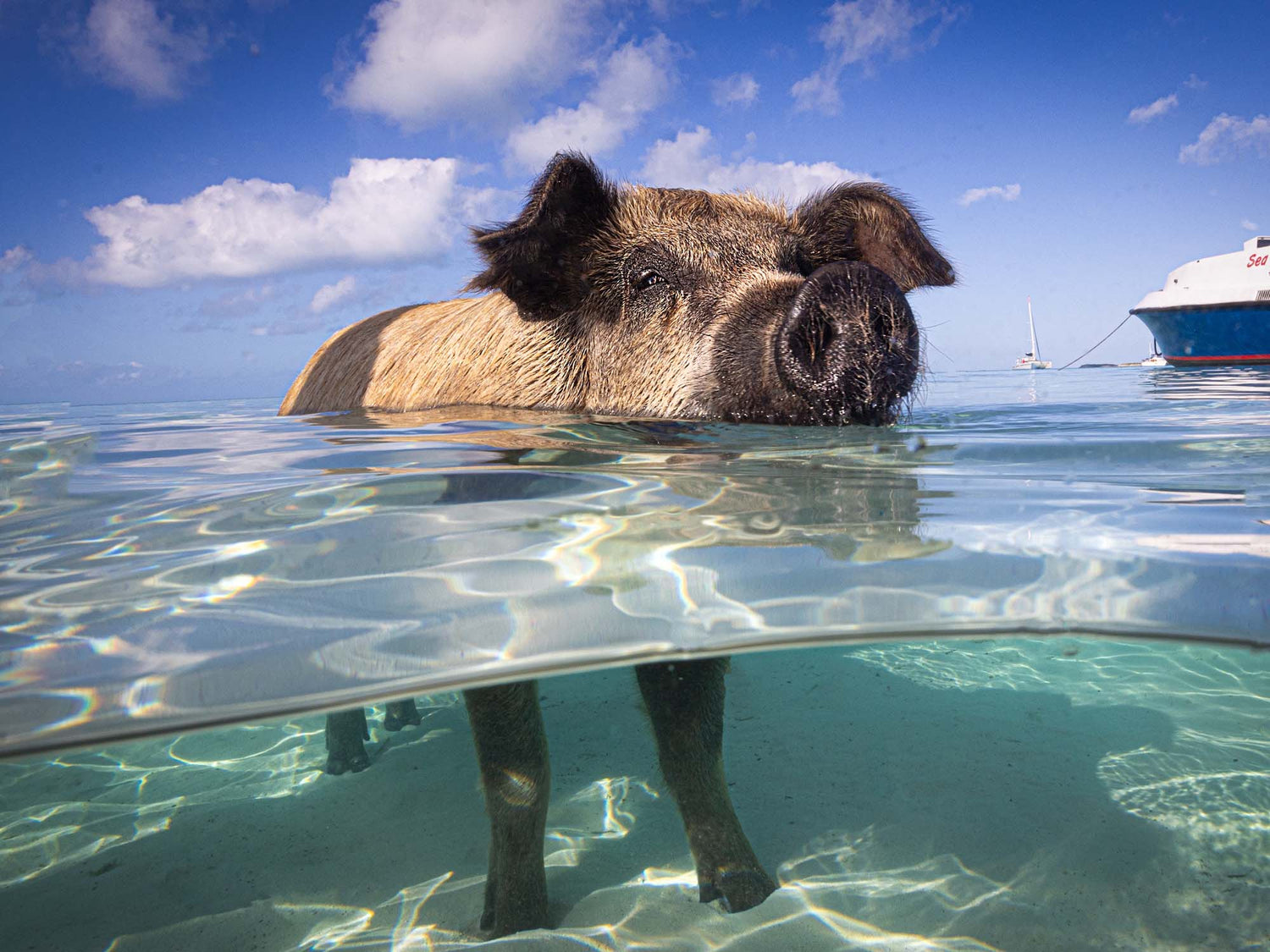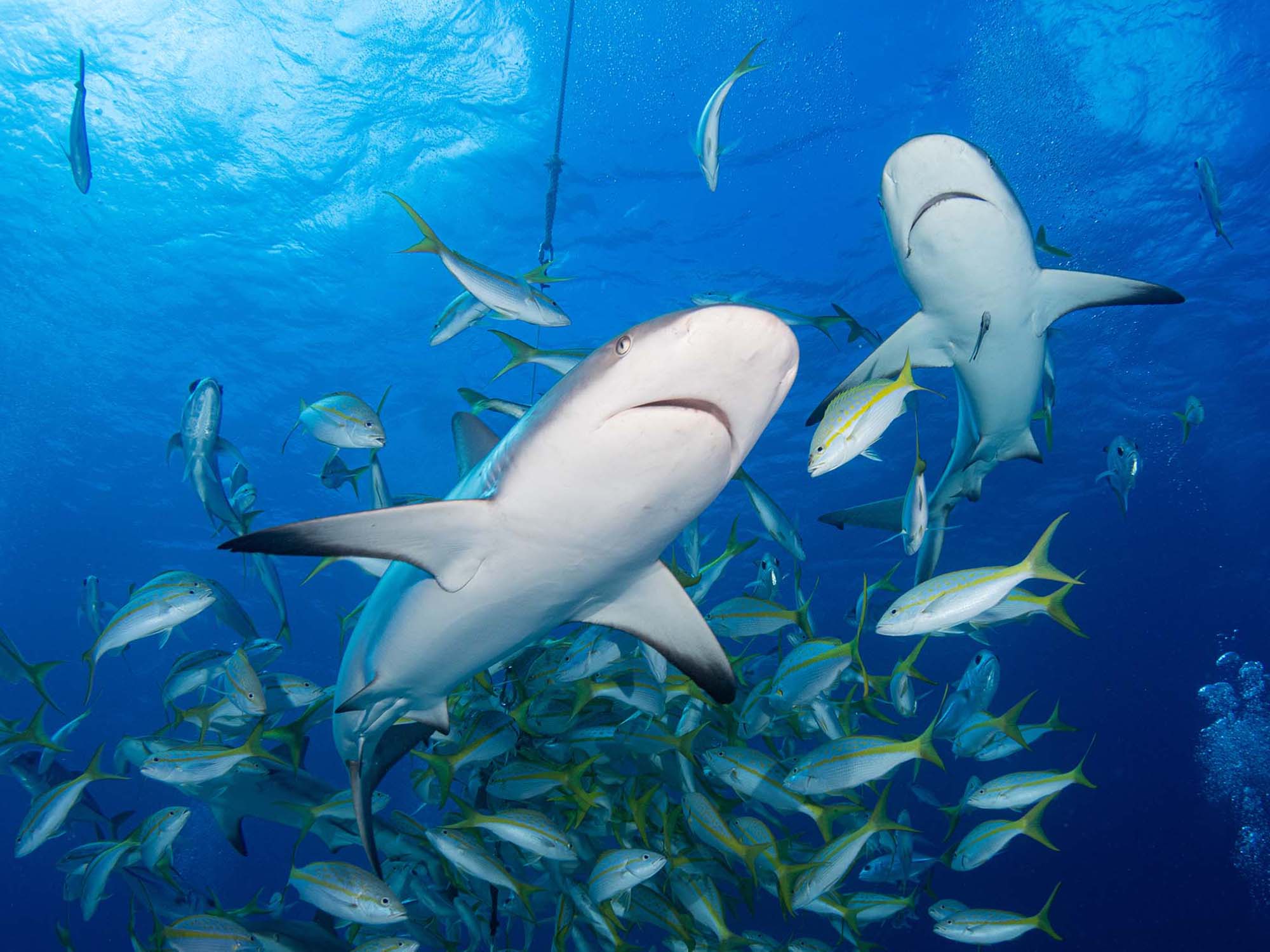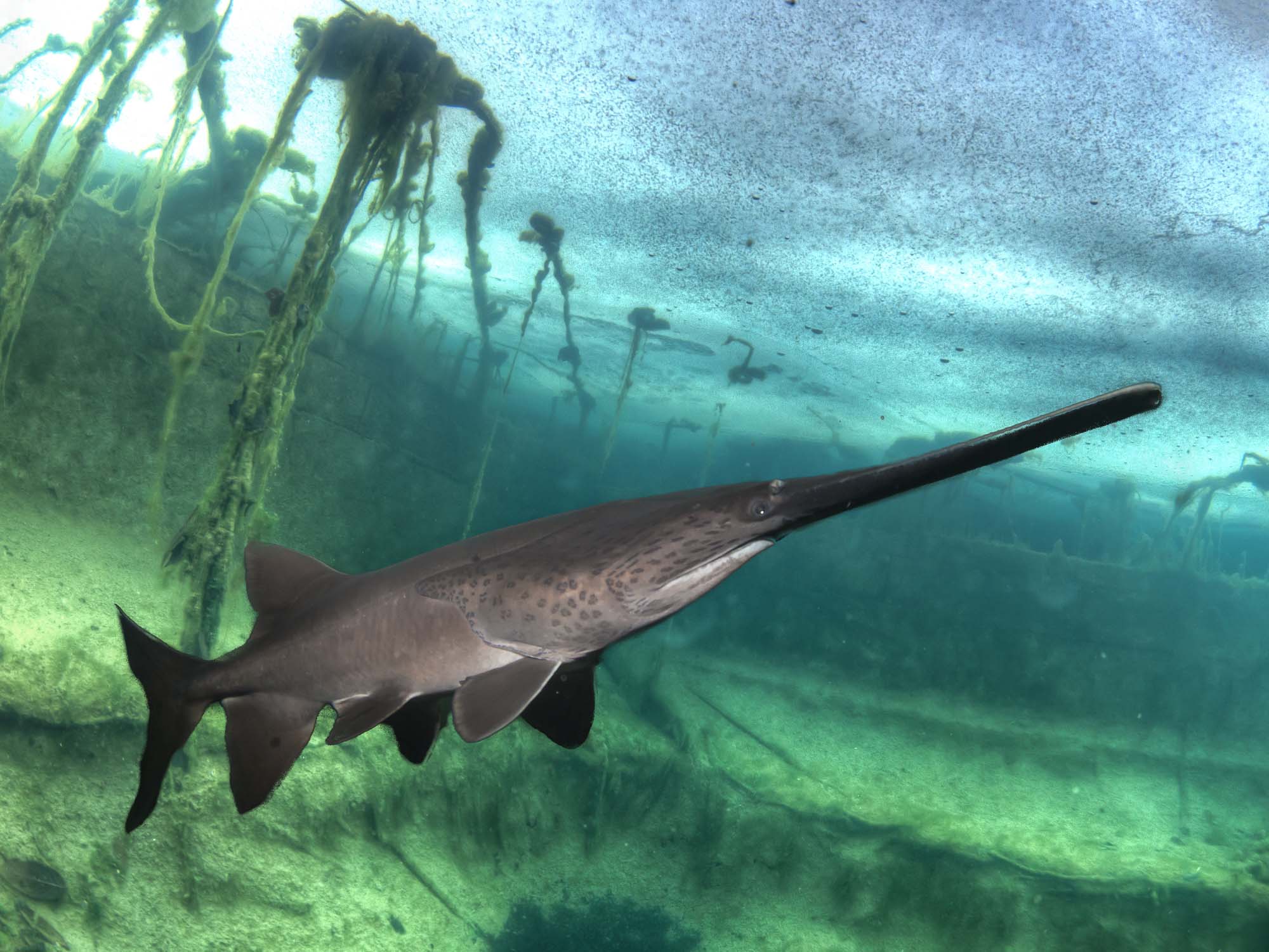DSLR + Mirrorless
ISO: 200-400. You can use the lowest ISO here, the sun is bright and reflects off of the sand, so light is plentiful.
Mode: Auto or Program are our favorite setting here, since flash is seldom used. If you prefer using manual, try metering the dark faces and you will save some time editing. The exposure of their dark fur and eyes is many stops away from the sky and sand.
Aperture: F-8 can be a starting point, you can also stop the lens down to increase your depth of field, or open the lens up to blur your background.
Shutter Speed: 1/125th second will be plenty fast to stop motion blur, faster is no problem in bright sun.
Lens: For split-shots, a super wide fisheye is our favorite choice, with a big dome. Rectilinear lenses will work fine too, a focal length of around 15mm will allow you to get the whole animal in the frame from very close. If you prefer to shoot portraits without a waterline, you can use any lens, even long lenses from a distance for face shots.

Expose your image for the pig and deal with the sky and water separately in your edit. © Gary Burns
Point + Shoot
ISO: 100 to 200 for bright sun.
Mode: Your Point and shoot camera can really shine here, try Program and Auto- and consider using flash fill. In air, the position of your onboard flash doesn’t present the problems it does once submerged.
Aperture: Full range depending on sun in your frame.
Shutter Speed: 1/125 to 1/200 (faster for natural light photography).
Lens: Try zooming in a bit for face shots, if you can fill most of the frame with the pig’s face your metering will be easier, and details in their fur will show up, even the pig’s very dark eyes.

Sky Swap in Photoshop boosted the overall look of this image by coloring up clouds that weren't really there. © Steve Miller
Technique
These pigs are friendly, and will come right to you. When you come into the beach, think about the image you want to capture. Do you want the boat, the island, your buddies in the frame? Or a clean portrait? Pay particular attention to the position of the sun. It is safest to keep it at your back to avoid a silhouette of the pig. If you find the sun is in your frame, try metering the face of the pig and letting the background blow out. The alternative is to increase the exposure of the dark areas in your editing. The tonal range is extreme here, large file cameras will pay off when you try to recover over- and under-exposed parts of your images.

Super wide lenses will focus as close as you want and carry an amazing depth of field. © Gary Burns
Strobes
The water is clear, but the sand will be kicked up so most people would leave their strobes behind. If you carry them with you, remember that the pig’s faces are very dark, so try to throw some light onto them, you can bounce your light off of the sand when you are shallow.
Additional Reading
How to Shoot Split Shots (Half-In, Half-Out of the Water)
Over-Under (Split Shots) Underwater Camera Settings
Sony a7R V Underwater Camera Review with Sample Footage [VIDEO]
Featured Customers | Lior Berman Underwater in the Exumas
Aqua Cat Bahamas // Best Dive Liveaboards for Underwater Photography [VIDEO]













